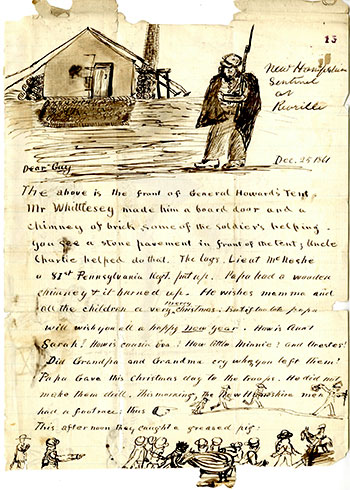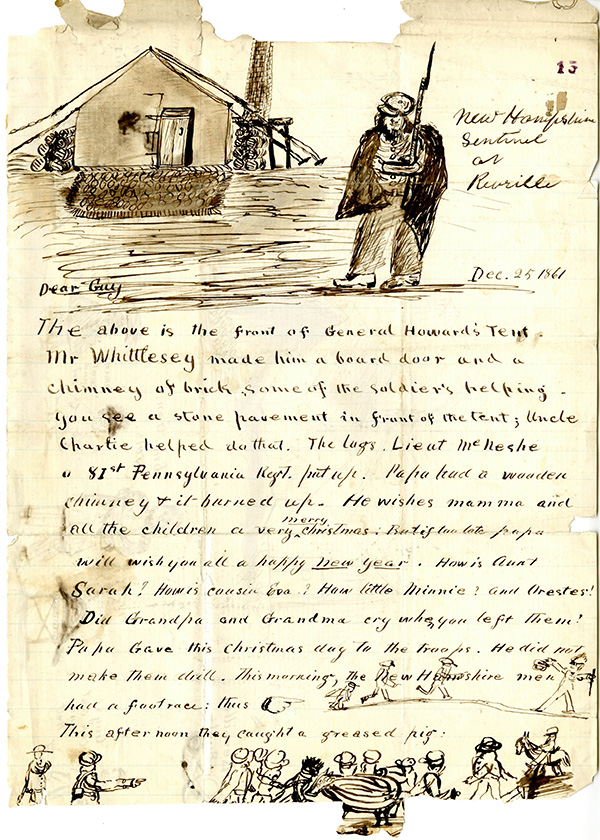Citing Our Materials
Citing manuscript and archival materials depends on the style your discipline, faculty, or publication requires. Here are some resources for citing archival material in Chicago, MLA, and APA, with references to relevant sections of each style’s official manual for further information.
If you can't find what you need in this guide or the official manual, or if you're confused about a citation, Special Collections and Archives staff would be happy to assist: email us.
The Bowdoin College Library also offers support for citations, more information available here: Citation and Style Guides.
The Chicago Manual of Style refers to archival collections as “Manuscript Collections.” It states that item identification should be the first part of a citation, and recommends inclusion of additional pieces of information to help others locate the item you cite. The manual advises authors to fully identify whatever they cite, and to format citations consistently in their work.
Most of the guidelines for citing archival materials are located in sections 14.232-14.242.
Note
See sections 14.221-14.231
You can use footnotes or endnotes in Chicago, both of which are numbered consecutively. In a Chicago-style note, the title of an individual item should appear first in your citation. If an items does not have a clear title, you may have to make one up, which is permitted for archival materials. Other pieces of information that could be included in the note are the item’s creation date; the box and folder you found it in; the name of the collection it is a part of; and the name of the library, archives, or other institution that owns the collection.
The letter at the right is from the Oliver Otis Howard Papers. Written by Howard to his son Guy Howard on Christmas day 1861, the letter contains drawings of camp life and family portraits. For a Chicago-style note form, cite as:
- Oliver Otis Howard to Guy Howard, 25 December 1861, Box 2, Folder 36, Oliver Otis Howard Papers, George J. Mitchell Dept. of Special Collections & Archives, Bowdoin College Library, Brunswick, Maine.
Bibliography
See sections 14.221-14.231
If you've cited one item from an archival collection, the name of the item or its creator is usually the main element in the bibliography entry. If you've cited more than one item from an archival collection, the name of the collection is usually the main element in the bibliography entry. In either case other pieces of information that could be included are the collection's date range; the name of the library, archives, or other institution that owns the collection; and the city and state in which the institution is located.
Using the letter at the right as an example, here’s how to cite for a Chicago-style bibliography:
Howard, Oliver Otis to Guy Howard, 25 December 1861. Oliver Otis Howard Papers. George J. Mitchell Dept. of Special Collections & Archives. Bowdoin College Library, Brunswick, Maine.
In the 8th edition of the MLA Handbook archival collections can be considered “containers” for the individual documents and records in them. MLA identifies nine core elements for entries in a works cited list. Some of these elements will be infrequently used for citing archival collections, while others will almost always be used.
See the MLA Handbook (pages 20-58) for more information.
In-text Citations
In MLA style in-text citations appear in the text of the paper enclosed in parentheses, and should include enough information to point to a specific source in the works cited list. The MLA Handbook does not provide any examples of in-text citations for archival material to supplement that general guideline.
The letter at the right is from the Oliver Otis Howard Papers. Written by Howard to his son Guy Howard on Christmas day 1861, the letter contains drawings of camp life and family portraits. For a MLA in-text citation, format as:
(Oliver Otis Howard to Guy Howard, 25 December 1861)
List of Works Cited
The MLA Handbook identifies nine core elements for entries in a works cited list. Some of these elements will be infrequently used for citing archival collections, while others will almost always be used.
Using the letter at the right as an example, here’s how to format an entry for a MLA list of works cited:
Howard, Oliver Otis to Guy Howard. Oliver Otis Howard Papers, 25 December 1861. Box 2, Folder 36, George J. Mitchell Dept. of Special Collections & Archives. Bowdoin College Library, Brunswick, Maine.
The Publication Manual of the American Psychological Association (APA) refers to archival materials as “archival documents and collections.” The manual includes several examples, but also states that the general format for citing archival materials can be modified to be more or less specific as appropriate for different types of collections, keeping in mind the purpose of the citation is to direct the reader to the cited source.
See the Publication Manual of the APA , especially the preamble to section 6.11 and section 7.10.
In-text Citations
APA style makes use of an in-text author-date citation system. In-text citations usually include enough information to point a reader to the proper citation in the Reference List. Archival materials can be challenging in such a system, as a document’s creator or date of creation are sometimes unknown. For this reason, most of the examples provided in the manual include additional information elements.
See the Publication Manual of the APA , especially the preamble to section 6.11.
The letter at the right is from the Oliver Otis Howard Papers. Written by Howard to his son Guy Howard on Christmas day 1861, the letter contains drawings of camp life and family portraits. For an APA in-text citation, format as:
(Howard, O. to G. Howard, December 25, 1861)
Reference List
If you cite just one item from an archival collection, that item should be included in your citation. If you cite several items from a single collection within the text of your paper, the entry in the Reference List should refer to the collection as a whole.
Using the letter at the right as an example, here’s how to format a citation for an APA reference list:
Howard, Oliver Otis (1861, December 25). [Letter to Guy Howard]. Oliver Otis Howard Papers. George J. Mitchell Dept. of Special Collections & Archives. Bowdoin College Library, Brunswick, Maine.
See Publication Manual of the APA , 7.10.


